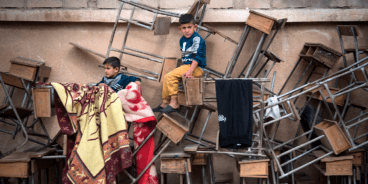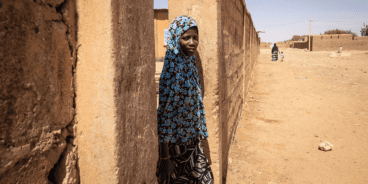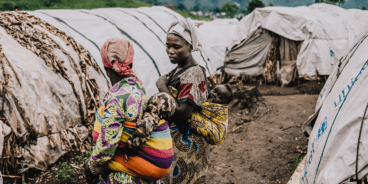
Remarks at UN General Assembly Side-Event on “Women and Girls in Crisis in DRC and South Sudan”
Statement delivered by Ms. Savita Pawnday, Deputy Executive Director, at an event hosted by the Government of Canada, UNFPA, Call to Action and ICPD25 on the sidelines of the opening of the UN General Assembly.
Your Excellencies, ladies and gentlemen,
Throughout history rape and sexual violence have been used as a weapon of war, often employed as a deliberate strategy by state and non-state actors. UN Security Council Resolution 1820, adopted in 2008, recognizes that sexual violence can itself constitute war crimes or crimes against humanity and may even amount to a constitutive act of genocide. Such crimes have been systematically perpetrated against women and girls in both the Democratic Republic of the Congo (DRC) and South Sudan, where thousands have survived rape, sexual exploitation, sexual slavery and other forms of gender-based violence.
Despite the many lessons learned from the situation in the DRC and the South Sudan over the past few decades, the system still often fails to adequately prevent and consistently respond to sexual and gender-based violence. In some instances, this is because early warning systems and conflict analysis does not take into account atrocity risks and how these risks uniquely affect specific groups.
Through committing to uphold their responsibility to protect populations from genocide, war crimes, crimes against humanity and ethnic cleansing, states agreed to find ways to prevent the widespread commission of atrocity crimes like sexual and gender-based violence. Thus it is important that R2P or the atrocity prevention lens is included in the risk assessments undertaken by the international community. Such an approach can be instrumental in closing the gap between prevention and protection.
The atrocity prevention lens captures patterns of behavior by potential perpetrators missed by existing conflict analysis. It helps us understand the nature of the violence, patterns of targeting certain populations – such as women and girls – and the means by which perpetrators inflict harm on their victims. Such a lens aids in putting systematic sexual and gender-based violence at the forefront or our analysis and response, because it allows for greater understanding that widespread and systematic attacks (both within and outside of conflict settings) come in many forms.
As we have seen from the experiences in DRC and South Sudan, successful prevention strategies require consistent participation from communities and extensive consultation with women in identifying their unique vulnerabilities, as well as their unique capacities in enhancing their own protection.
Women are powerful agents of change. The international community needs to get better at listening and learning from women and girls. Only by doing so can we develop adequate and holistic prevention and response mechanisms to mass atrocities around the world.
Thank you.
Related Publications


